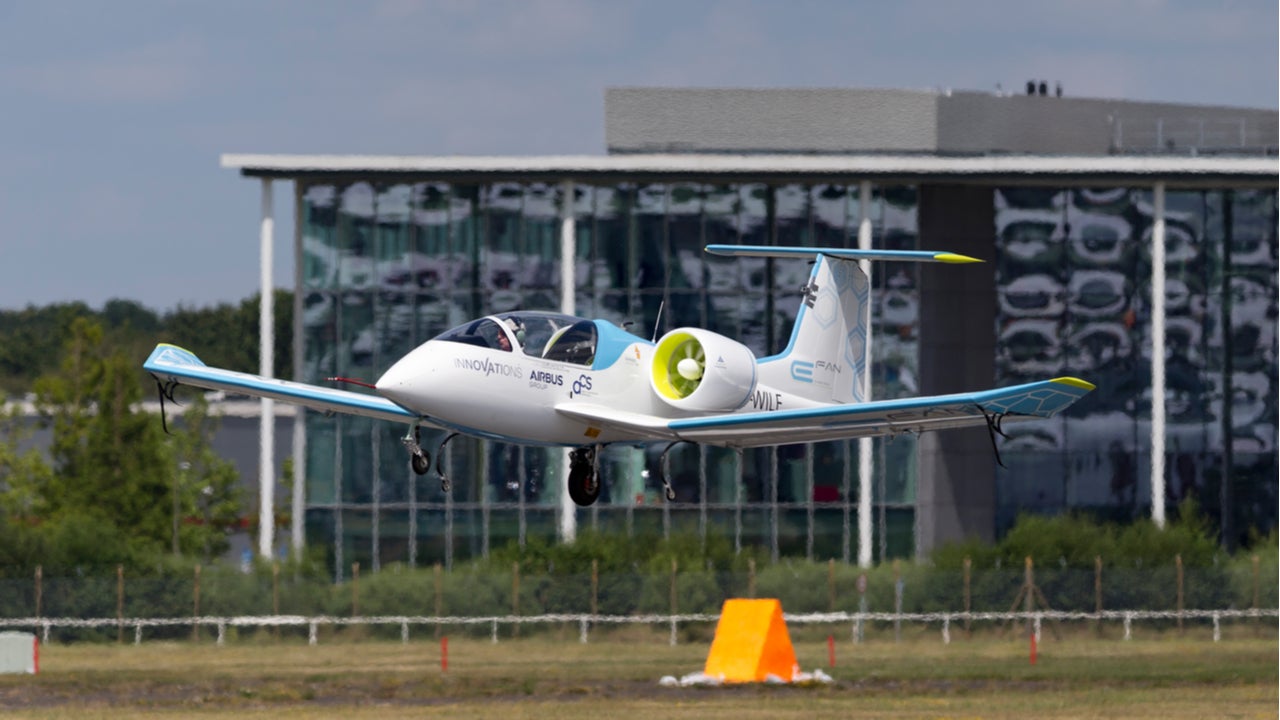Listed below are the key technology trends impacting the ESG theme, as identified by GlobalData.
The aerospace and defense industry has been under increased scrutiny to reduce air travel carbon emissions. Consequently, a variety of technologies are being developed to increase fuel efficiency and reduce carbon emissions. For instance, sustainable aviation fuels (SAFs) are being considered as a potential alternative for jet fuel, reducing carbon emissions by up to 80%.
Sustainable aviation fuel (SAF)
A new generation of SAF is being made from recycled materials like cooking oil or biowaste. In comparison to fossil fuels, they can reduce CO2 emissions by 80%. Forestry or agricultural wastes and residues are part of SAF production alongside municipal solid wastes (MSW) or algae. Technologies (such as electro-fuels) based on carbon from waste gases or direct air capture combined with hydrogen obtained from renewable energy are other SAFs.
Hybrid-electric
Hybrid-electric propulsion refers to a propulsion system in which conventional turbofans or turboshafts are supplemented with electrical power stored in batteries. The advantages of this system is that it can make the flight more fuel-efficient and environmentally friendly. This is achieved by either saving fuel during short high thrust sections of flight or through using the battery during long, low-thrust cruising sections of flight. The underlying logic of this propulsion system is that battery-specific energy is not yet high enough to supply power for an entire flight, and therefore, can only be used for specific sections of the flight envelope.
More electric aircraft (MEA)
Electrical systems have manifested themselves in two distinct categories in the aerospace industry: more electric aircraft (MEA) and electric propulsion. MEA refers to the trend found in commercial and defense aircraft in which an increasing number of systems are electronically operated, replacing hydraulic, mechanical, or pneumatic systems.
Aircraft depend on several support systems besides propulsion. These systems include actuators, de-icing, and air conditioning and have traditionally siphoned their power from the engine. Hydraulic and electric systems use a mechanical transition through the engine gearbox, while engine compressor air bleed systems generate pneumatic power. Only a small proportion of the power, around 5%, is siphoned from the engine, with the vast majority deployed to provide thrust.
Electric propulsion
Electric propulsion, or electric aircraft, describes the range of fixed-wing aircraft and rotorcraft that, at least in part, rely upon electricity to power their propulsion. While still a nascent market segment, electric aircraft can disrupt the existing aerospace industry, providing a challenge to the dominance of hydrocarbon propulsion. In the context of climate change, electric aircraft may have an advantage commercially in the future as emissions standards and carbon taxes increase the cost of operating a hydrocarbon fleet.
There are three options available to aircraft developers regarding electric aircraft: hybrid-electric propulsion, turbo-electric propulsion, or all-electric propulsion. In 2019, Rolls-Royce successfully tested its hybrid version of the M250 gas turbine and aims to integrate it on an aircraft and experimental flights in 2021.
Hydrogen-powered aircraft
Hydrogen as an alternative fuel source is increasingly recognised as a viable option as manufacturers understand the need to produce more fuel-efficient and environmentally friendly aircraft. In September 2020, Airbus announced the development of a zero-emission aircraft that will rely on hydrogen as the primary energy source, presenting three concept planes that it says could be ready for deployment by 2035.
Hydrogen-powered aircraft produce zero CO2 emissions and, depending on the technology used, can substantially reduce or even eliminate air pollutants such as nitrogen oxide, as well as prevent contrail formation. However, very little hydrogen is currently produced using low-carbon energy sources, and there are several serious obstacles to using hydrogen in aircraft and other vehicles. According to a research by Pennsylvania State University, large commercial hydrogen aircraft “will probably not enter service until closer to 2040”.
Lightweight composite materials
Advancements in lightweight composite materials will enable designers to dramatically reduce the weight of airframes, from large commercial airliners to lightweight high altitude platform systems (HAPS). This will enhance and accelerate the proliferation of electric aircraft by reducing the energy density burden for batteries. Airframes will be lighter, so less power will be required on board to provide lift.
Batteries
Batteries are a component of electric aircraft technology, having been the limiting factor since the notion of electrically-propelled aircraft was first proposed. Previously, batteries were not energy-dense enough to be used in flight. The amount of energy stored within fuel was far greater than that stored in the same weight of batteries, limiting the range of electric flights. However, recent developments propelled increasing battery energy density. Additionally, battery technology will likely continue to improve as several industries, such as the automotive industry, shift to offer more environmentally friendly alternatives.
This is an edited extract from the ESG (Environmental, Social, and Governance) in Aerospace and Defense – Thematic Research report produced by GlobalData Thematic Research.






